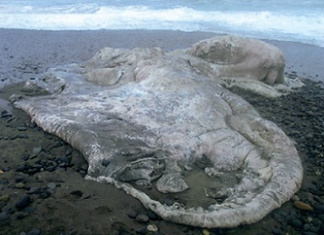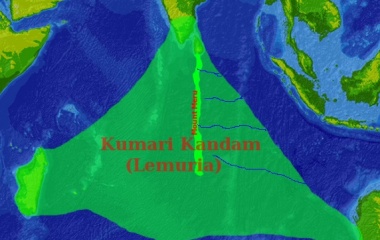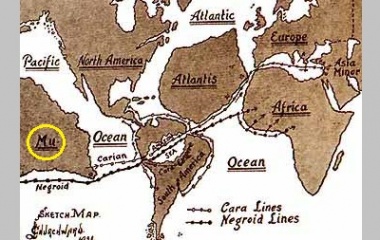An ancient and advanced race of beings purportedly inhabited a landmass which sunk into the ocean, spreading the survivors to all corners of the earth. Though debunked by modern science, the mythical island of Lemuria remains a reality to futurists and mystics today.
What Is Lemuria?
Lemuria is a mythological lost continent located in the Indian or Pacific Ocean. The name is sometimes used interchangeably with the name of another lost continent called Mu. Lemuria is said to share many of its attributes with a more well-known sunken landmass, Atlantis. Both were represented as idyllic paradises, crime free, with abundant food sources and as places where the inhabitants had the ability to communicate to each other telepathically, according to Theosophists.
Origins
With the theory of evolution coming to the fore in the 19th century, many people were starting to think differently about life and were beginning to challenge the worldview. This included postulates on ancient civilizations and the conception of new forms of mysticism like Theosophy.
Charles-Etienne Brasseur de Bourbourg
Early references to the lost continent of Lemuria or Mu can be found in 1864 with Charles-Etienne Brasseur de Bourbourg, archeologist and historian. Brasseur had become enamored with the ancient Mayan civilization after exploring Mayan ruins in the Yucatan region, and traveled to Spain to view more artifacts firsthand. There, he came across an alleged guide to Mayan hieroglyphics and used the guide to decode an ancient Mayan manuscript. He claimed to have discovered an ancient land which had sunk into the sea due to a cataclysmic volcanic eruption. In the guide, he found characters that corresponded to the letters M and U, which were associated with the mysterious sunken landmass. With this information, he concluded that the landmass was called Mu. Unfortunately, his interpretations turned out to be erroneous, as later scholars discovered. Furthermore, Mayan hieroglyphics were only successfully decoded in the mid-20th century.
Augustus Le Plongeon
Brasseur’s version of Lemuria, or Mu, was taken up by fellow archeologist, Augustus Le Plongeon. Le Plongeon purportedly came across a story of two brothers desirous of the attention and affection of a Queen by the name of Moo, who Le Plongeon linked to Mu. One of the brothers died and the other took over control of the island just before a major disaster struck. The Queen supposedly fled just before the calamity and, as the story escalates, fled to Egypt, became the goddess Isis, and ordered the building of the Sphinx.
Phillip L Schlater
Another version of the legend stemmed from Charles Darwin’s publication of Origin of the Species in 1859. A particular departure to his controversial theory was brought to the fore which led scientists to speculate on the existence of a land bridge in the Indian Ocean millions of years ago. According to their assertions, animals in different areas should have developed different traits, yet lemurs (a species of monkey) found in both Madagascar and India had the same traits. Additionally, layers of sediment found on both sites also matched. The name for the alleged land bridge, Lemuria, was proposed by English Zoologist, Phillip L Schlater. Schlater’s idea was taken up by scientists Heinrich Haeckel and Alfred Russell Wallace. They used the theory of the sunken continent to explain the absence of early human fossils, as none had been discovered by that stage.
James Churchward
The theory of the mythical landmass then passed from the scientists into the hands of the mystics. In the 1870s, mystic James Churchward postulated Lemuria as a lost continent and former home of an advanced human race. He believed Lemuria was a paradise, with over 64 million people at its peak. He purported the inhabitants lived to be hundreds of years old and were capable of teleportation, telepathy and astral travel. In his view, the landmass was destroyed in approximately 10 000 BC.
Helena Petrovna Blavatsky
Renowned occultist and mystic Helena Petrovna Blavatsky, who formed the Theosophical society, claimed to have acquired the knowledge on Lemuria through an ancient Tibetan text, the Book of Dzyan. She claimed the works were shown to her by survivors of the lost continent. She believed the Lemurians were the third of seven kinds of root race and possessed a third eye and psychic abilities. The landmass was situated in the Indian Ocean, according to her, and existed approximately 150 million years ago.
William Scott-Elliot, a fellow theosophist, elaborated on Blavatsky’s notion of Lemuria. In his works The Story of Atlantis and The Lost Lemuria, Scott-Elliot claimed to have received his knowledge of the lost continent through astral clairvoyance. The founder of Anthroposophy, Rudolf Steiner, was a further proponent of the mystical island.
Evidence of Its Existence
Possible evidence of Lemuria or Mu’s existence may include Japan’s underwater site at Yonaguni, Hawaii’s Big Island Petroglyphs or Easter Island’s megalithic sites. Various cultures, including the Maoris, the Samoans and Tamil literature, share legends of similar mythical landmasses. Modern science has, however, debunked the mythological landmasses of Atlantis, Mu and Lemuria, since the time the theory of plate tectonics and continental drift became generally accepted.
Modern Lemuria
American Christian mystic Edgar Cayce (1877 – 1945) mentioned Lemuria in many of his psychic readings. The American author and futurist David Childress purports the continent of Mu or Lemuria arose 78 000 years ago. He believes there was one government and one language, and education was key to the empire’s success.
The intrigue and mystery of Lemuria, Mu, Atlantis and other lost continents are kept alive by philosophers, mystics, futurists and the open-minded. They allow us a glimpse into the ancient past and visions of the distant future where science fiction becomes science fact.










